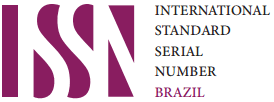Premenstrual syndrome and pré-menstrual dysphoric disorder: cognitive behavioral therapy as treatment
DOI:
https://doi.org/10.25118/2236-918X-7-6-2Keywords:
Premenstrual syndrome, premenstrual dysphoric disorder, cognitive behavioral therapyAbstract
Objectives: To elucidate the main current hypotheses on premenstrual dysphoric disorder (PMDD), premenstrual syndrome (PMS), and the use of cognitive behavioral therapy (CBT) as treatment. Method: A search was conducted in the PubMed, Cochrane, and BIREME (LILACS/BVS) databases, browsing for articles published in Portuguese, Spanish and English and over the time periods 2000 and 2017, using the following keywords: premenstrual dysphoric disorder, premenstrual syndrome, and cognitive behavioral therapy. Results: One-hundred and seven studies met the inclusion criteria, including literature reviews, crosssectional studies, prospective cohort studies and a retrospective cohort study. One-hundred and five studies identified the fundamental factors involved in the development of PMDD: ovarian function, hormonal function, neurotransmitters, genetic and environmental factors and vulnerability. Studies figuring CBT as the first-line treatment are available since 2009. Conclusion: The mechanisms behind PMDD can be seen as a complex network of multiple factors. There are no conclusive findings, and further research is needed to define the etiopathogenic processes of PMDD. CBT has demonstrated its efficacy as a first-line treatment for PMS and PMDD.
Downloads
Metrics
References
Nogueira CWM, Silva JLP. O impacto do ciclo menstrual na biologia feminina. Femina. 2006;34:743-7.
Halbreich U, Brackstrom T, Erickson E, O’Brien S, Calil H, Coskova E, et al. Clinical diagnostic criteria for premenstrual syndrome and guidelines for their quantification for research studies. Gynecol Endocrinol. 2007;23:123-30.
Feuchtersleben EF von. In: Encyclopedia Britannica. 11th ed. Cambridge: Cambridge University Press; 1911. p. 296-97.
Miller MN, Miller BE. Premenstrual exacerbations of mood disorders. Psychopharmacol Bull. 2001;35:135-49.
Valadares GC, Ferreira LV, Correa Filho H, Romano-Silva MA. Transtorno disfórico prémenstrual revisão-conceito, história, epidemiologia e etiologia. Rev Psiquiatr Clin. 2006;33:117-23.
Freeman EW. Premenstrual Syndrome and pré-menstrual dysphoric disorder: definition and diagnosis. Psychoneuroendocrinology. 2003;28:25-37.
Pincus SM, Schmidt PJ, Palladino-Negro P, Rubinov DR. Differentiation of women with pré-menstrual dysphoric disorder, recurrent brief depression, and healthy controls by daily mood rating dynamics. J Psychiatr Res. 2008;42:337-47.
Silva CM, Gigante DP, Carret ML, Fassa AG. [Population study of premenstrual syndrome]. Rev Saude Publica. 2006;40:47-56.
Steiner M. Premenstrual syndrome and premenstrual dysphoric disorder: guidelines for management. J Psychiatry Neurosci. 2000;25:459-68.
Johnson SR. Premenstrual syndrome, premenstrual dysphoric disorder, and beyond: a clinical primer for practitioners. Obstet Gynecol. 2004;104:845-59.
Yonkers KA, O’Brien PM, Eriksson E. Premenstrual syndrome. Lancet. 2008;371:1200-10.
Melo NR de, Machado RB, Fernandes CE. Irregularidades menstruais-inter-relações com o psiquismo. Rev Psiquiatr Clin. 2006;33:55-9.
Indusekhar R, Usman SB, O’Brien S. Psychological aspects of premenstrual syndrome. Best Pract Res Clin Obstet Gynaecol. 2007;21:207-20.
Soares CN, Zite B. Reproductive hormone sensitive and risk for depression across the female life cycle: a continuum of vulnerability? J Psychiatry Neurosci. 2008;33:331-43.
Nahas EAP, Nahas-Neto J, Pontes A, Dias R, Fernandes CE. Estados hiperprolactinêmicos: inter-relações com o psiquismo. Rev Psiquiatr Clin. 2006;33:68-73.
Huo L, Straub RE, Roca C, Schmidt PJ, Shi K, Vakklanka R, et al. Risk for premenstrual dysphoric disorder is associated with genetic variation in ESR1, the estrogen receptor alpha gene. Biol Psychiatry. 2007;62:925-33.
Matsumoto T, Ushiroyama T, Kimura T, Hayashi T, Moritani T. Altered autonomic nervous system activity as a potent etiological factor of premenstrual syndrome and premenstrual dysphoric disorder. Biopsychosoc Med. 2007;1:24.
Braverman PK. Premenstrual syndrome and premenstrual dysphoric disorder. J Pediatr Adolesc Gynecol. 2007;20:3-12.
Medeiros SF, Medeiros MMWY. Gonadotropin level changes during the reproductive life. Rev Ginecol Obstet. 2007;29:48-55.
Usman SB, Indusekhar R, O’Brien S. Hormonal management of premenstrual syndrome. Best Pract Res Clin Obstet Gynaecol. 2008;22:251-60.
Born L, Phillips SD, Steiner M, Soares CN. [Trauma the reproductive life cycle in women]. Rev Bras Psiquiatr. 2005;25:S65-72.
Bianchi-Demicheli F, Ludicke F, Lucas H, Chardonnens D. Premenstrual dysphoric disorder: current status of treatment. Swiss Med Wkly. 2002;132:574-8.
Sammon CJ, Nazareth I, Petersen I. Recording and treatment of premenstrual syndrome in UK general practice: a retrospective cohort study. BMJ Open. 2016;6:e010244.
Abdollahifard S, Rahmanian Koshkaki A, Moazamiyanfar R. The effects of vitamin B1 on ameliorating the premenstrual syndrome symptoms. Glob J Health Sci. 2014;6:144-53.
Dadkhah H, Ebrahimi E, Fathizadeh N. Evaluating the effects of vitamin D and vitamin E supplement on premenstrual syndrome: a randomized, doubleblind, controlled trial. Iran J Nurs Midwifery Res. 2016;21:159-64.
Gianetto-Berruti A, Feyles V. Premenstrual syndrome. Minerva Ginecol. 2002;54:85-95.
Gorenstein C, Andrade LHS, Zuardir AW. Inventário de depressão de Beck (BDI). In: Gorenstein C, Andrade LHSG, Zuardi AW. Escalas de Avaliação Clínica em Psiquiatria e Psicofarmacologia. São Paulo: Lemos; 2008. p. 89-95.
Moraes JL, Ximenes RC, dos Passos MP, Sougey EB. Validação da versão brasileira do Questionário de Autoavaliação da Escala de Hamilton para Depressão (QAEHD) [dissertation]. Recife: Universidade Federal de Pernambuco; 2008.
Associação Americana de Psiquiatria. Manual Diagnóstico e Estatístico de Transtornos Mentais, 5ª edição (DSM-5). Porto Alegre: Artmed; 2014.
Kirkby RJ. Changes in premenstrual symptoms and irrational thinking following cognitivebehavioural coping skills training. J Consult Clin Psychol. 1994;62:1026-32.
Potter ML, Jacela JY, Tokach MD, DeRouchey JM, Goodband RD, Nelssen JL, et al. Effects of increasing hominy feed in diets on finishing pig performance. In: Swine Day, Manhattan, KS, 2009 Nov 19; Kansas; USA. Report of Progress 1020; p.168-73.
Landen M, Thase ME. A model to explain the therapeutic effects of serotonina reuptake inhibitors the role of 5-HT 2 receptors. Psychopharmacol Bull. 2006:39:147-66.
Raval CM, Panchal BN, Tiwari DS, Vala AU, Bhatt RB. Prevalence of premenstrual syndrome and premenstrual dysphoric disorder among college students of Bhavnagar, Gujarat. Indian J Psychiatry. 2016;58:164-70.
Fink G, Summer BE, Rosie R, Grace O, Quinn JP. Estrogen control of central neurotransmission: effect on mood, mental state and memory. Cell Mol Neurobiol. 1996;16:325-44.
Elliot H. Pré-menstrual dysphoric disorder. A guide for the treating clinician. N C Med J. 2002;63:72-5.
Tartagni M, Cicinelli MV, Tartagni MV, Alrasheed H, Matteo M, Baldini D, et al. Vitamina D supplementation for pré-menstrual syndromerelated mood disorders in adolescents with severe hypovitaminosis D. J Pediatr Adolesc Gynecol. 2016;29:357-61.
Hofmeister S, Bodden S. Premenstrual syndrome and premenstrual dysphoric disorder. Am Farm Physician. 2016;94:236-40.
Lanza di Scalea T, Pearlstein T. Premenstrual dysphoric disorder. Psychiatr Clin North Am. 2017;40:201-16.
Santra Dhali R, Banerju P, Munshi S, Chaudhuri PR. Hypoglycemic episodes in a case of premenstrual dysphoric disorder on sertraline. Indian J Pharmacol. 2015;47:567-8.
Yonkers KA, Kornstein SG, Gueorguieva R, Merry B, van Steenburgh K, Altemus M. Symptomonset dosing of sertraline for the treatment of premenstrual dysphoric disorder: a randomized clinical trial. JAMA Psychiatry. 2015;72:1037-44.
Jackson C, Pearson B, Girdler S, Johnson J, Hamer RM, Killenberg S, et al. Double-blind, placebo-controlled pilot study of adjunctive quetiapine SR in the treatment of PMS/PMDD. Hum Psychopharmacol. 2015;30:425-34.
Kwan I, Onwude JL. Premenstrual syndrome. BMJ Clin Evid. 2015 Aug 25;2015. pii: 0806.
Tacani PM, Ribeiro Dde O, Barros Guimarães BE, Machado AF, Tacani RE. Characterization of symptoms and edema distribution in premenstrual syndrome. Int J Womens Health. 2015;7:297-303.
Aan Het Rot M, Miloserdov K, Buijze AL, Meesters Y, Gordijn MC. Premenstrual mood and empathy after a single light therapy session. Psychiatry Res. 2017;256:212-8.
Ussher JN, Perz J. Evaluati on of the relati ve effi cacy of a couple cogniti ve-behaviour therapy (CBT) for premenstrual disorders (PMDs), in comparison to one-to-one CBT and a wait list control: a randomized controlled trial. PLOS One. 2017;12:e0175068.
Vitt engl JR, Janet RB, Weitz E, Hollon SD, Twisk J, Cristea I, et al. Divergent out comes in cogniti vebehavioral therapy and pharmacotherapy for adult depression. Am J Psychiatry. 2016;173:481-90.
Panahi F, Faramarzi M. The eff ects of mindfulnessbased cogniti ve therapy on depression and anxiety in women with premenstrual syndrome. Depress Res Treat. 2016;2016:9816481. doi: 10.1155/2016/9816481. Epub 2016 Nov 29.
Izadi-Mazidi M, Davoudi I, Mehrabizadeh M. Effect of group cogniti ve-behavioral therapy on health-related quality of life in females with premenstrual syndrome. Iran J Psychiatry Behav Sci. 2016;10:e4961.
Maddineshat M, Keyvanloo S, Lashkardoost H, Arki M, Tabatabaeichehr M. Eff ecti veness of group cogniti ve-behavioral therapy on symptoms of premenstrual syndrome (PMS). Iran J Psychiatry. 2016;11:30-6.
Kues JN, Janda C, Kleinstäuber M, Weise C. Internet-based cogniti ve behavioural self-help for premenstrual syndrome: study protocol for a randomised controlled trial. Trials. 2014;15:472.
Cuijpers P, Sijbrandij M, Koole S, Huibers M, Berking M, Andersson G. Psychological treatment of generalized anxiety disorder: a meta-analysis. Clin Psychol Rev. 2014;34:130-40.
Taghizadeh Z, Shirmohammadi M, Feizi A, Arbabi M. The eff ect of cogniti ve behavioural psychoeducati on on premenstrual syndrome and related symptoms. J Psychiatr Ment Health Nurs. 2013;20:705-13.
Dennerstein L, Lehert P, Heinemann K. Global study of women’s of premenstrual symptoms and their eff ects on daily life. Menopause Int. 2011;17:88-95.
Busse JW, Montori VM, Krasnick C, Patelis- Sioti s I, Guyatt GH. Psychological interventi on for premenstrual syndrome: a meta-analysis of randomized controlled trials. Psychoter Psychosom. 2009;78:6-15.
Witt chen HU, Becker E, Lieb R, Krause P. Prevalence, incidence and stability of premenstrual dysphoric disorder in the community. Psychol Med. 2002;32:119-32.
Pearlstein T, Steiner M. Non-anti depressant treatment of premenstrual syndrome. J Clin Psychiatry. 2000;61:22-7.
Christensen AP, Oei TP. The effi cacy of cogniti ve behaviour therapy in treati ng premenstrual dysphoric changes. J Aff ect Disord. 1995;33:57-63.
Lustyk MK, Gerrish WG, Shaver S, Keys SL. Cogniti ve-behavioral therapy for premenstrual syndrome and premenstrual dysphoric disorder: a systemati c review. Arch Womens Ment Health. 2009;12:85-96.
Ussher JN, Perz J. Evaluati on of the relati ve effi cacy of a couple cogniti ve-behaviour therapy (CBT) for premenstrual disorders (PMDs), in comparison to one-to-one CBT and a wait list control: a randomized controlled trial. PLOS One. 2017;12:e0175068.
Vitt engl JR, Janet RB, Weitz E, Hollon SD, Twisk J, Cristea I, et al. Divergent out comes in cogniti vebehavioral therapy and pharmacotherapy for adult depression. Am J Psychiatry. 2016;173:481-90.
Panahi F, Faramarzi M. The eff ects of mindfulnessbased cogniti ve therapy on depression and anxiety in women with premenstrual syndrome. Depress Res Treat. 2016;2016:9816481. doi: 10.1155/2016/9816481. Epub 2016 Nov 29.
Izadi-Mazidi M, Davoudi I, Mehrabizadeh M. Effect of group cogniti ve-behavioral therapy on health-related quality of life in females with premenstrual syndrome. Iran J Psychiatry Behav Sci. 2016;10:e4961.
Maddineshat M, Keyvanloo S, Lashkardoost H, Arki M, Tabatabaeichehr M. Eff ecti veness of group cogniti ve-behavioral therapy on symptoms of premenstrual syndrome (PMS). Iran J Psychiatry. 2016;11:30-6.
Kues JN, Janda C, Kleinstäuber M, Weise C. Internet-based cogniti ve behavioural self-help for premenstrual syndrome: study protocol for a randomised controlled trial. Trials. 2014;15:472.
Cuijpers P, Sijbrandij M, Koole S, Huibers M, Berking M, Andersson G. Psychological treatment of generalized anxiety disorder: a meta-analysis. Clin Psychol Rev. 2014;34:130-40.
Taghizadeh Z, Shirmohammadi M, Feizi A, Arbabi M. The eff ect of cogniti ve behavioural psychoeducati on on premenstrual syndrome and related symptoms. J Psychiatr Ment Health Nurs. 2013;20:705-13.
Dennerstein L, Lehert P, Heinemann K. Global study of women’s of premenstrual symptoms and their eff ects on daily life. Menopause Int. 2011;17:88-95.
Busse JW, Montori VM, Krasnick C, Patelis-Sioti s I, Guyatt GH. Psychological interventi on for premenstrual syndrome: a meta-analysis of randomized controlled trials. Psychoter Psychosom. 2009;78:6-15.
Witt chen HU, Becker E, Lieb R, Krause P. Prevalence, incidence and stability of premenstrual dysphoric disorder in the community. Psychol Med. 2002;32:119-32.
Pearlstein T, Steiner M. Non-anti depressant treatment of premenstrual syndrome. J Clin Psychiatry. 2000;61:22-7.
Christensen AP, Oei TP. The effi cacy of cogniti ve behaviour therapy in treati ng premenstrual dysphoric changes. J Aff ect Disord. 1995;33:57-63.
Lustyk MK, Gerrish WG, Shaver S, Keys SL. Cogniti ve-behavioral therapy for premenstrual syndrome and premenstrual dysphoric disorder: a systemati c review. Arch Womens Ment Health. 2009;12:85-96.
Downloads
Published
How to Cite
Conference Proceedings Volume
Section
License

This work is licensed under a Creative Commons Attribution-NonCommercial 4.0 International License.
Debates em Psiquiatria allows the author (s) to keep their copyrights unrestricted. Allows the author (s) to retain their publication rights without restriction. Authors should ensure that the article is an original work without fabrication, fraud or plagiarism; does not infringe any copyright or right of ownership of any third party. Authors should also ensure that each one complies with the authorship requirements as recommended by the ICMJE and understand that if the article or part of it is flawed or fraudulent, each author shares responsibility.
Attribution-NonCommercial 4.0 International (CC BY-NC 4.0) - Debates em Psiquiatria is governed by the licencse CC-By-NC
You are free to:
- Share — copy and redistribute the material in any medium or format
- Adapt — remix, transform, and build upon the material
The licensor cannot revoke these freedoms as long as you follow the license terms. Under the following terms:
- Attribution — You must give appropriate credit, provide a link to the license, and indicate if changes were made. You may do so in any reasonable manner, but not in any way that suggests the licensor endorses you or your use.
- NonCommercial — You may not use the material for commercial purposes.
No additional restrictions — You may not apply legal terms or technological measures that legally restrict others from doing anything the license permits.






























